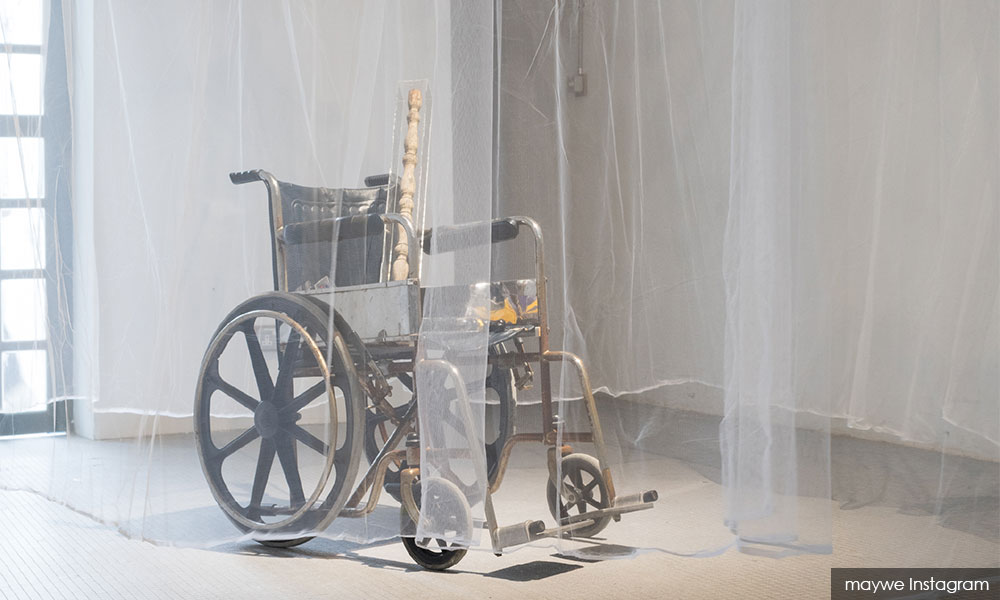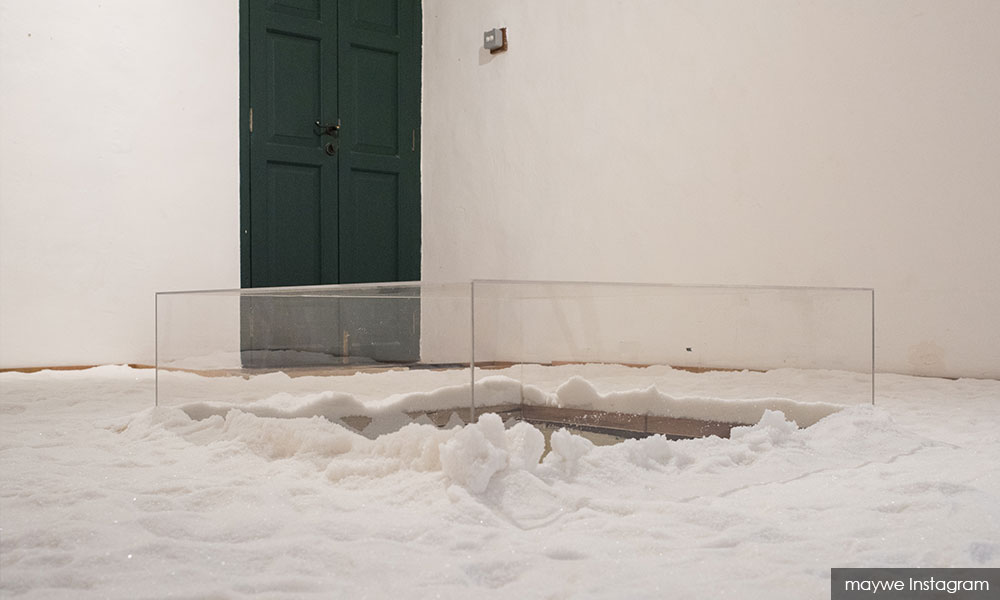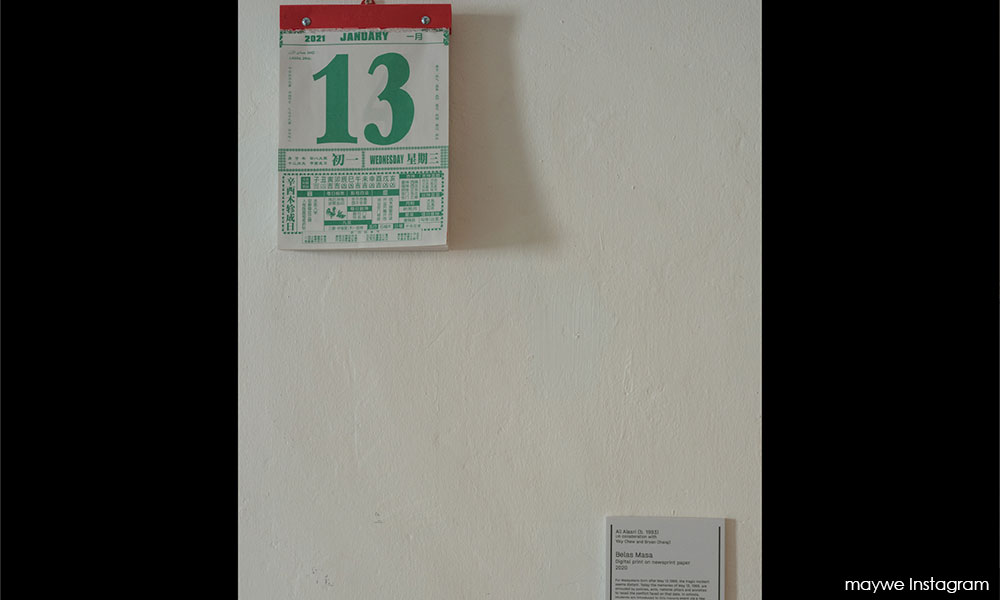Exhibition showcases young artists' take on May 13
May 13, 1969, is the biggest scar on the Malaysian psyche and there is a school of thought that says it should be left firmly in the distant past. However, as a society, we cannot learn if we do not face up to the dark chapters in our history.
The 'May We' exhibition sees a group of young people exploring the current generation's perspectives on May 13. Determined to go beyond a few facile sentences in history textbooks, they took it upon themselves to examine the incident from a variety of collated memories, artefacts and documents, culminating in an exhibition.
Due to the Covid-19 pandemic and the movement control order (MCO), curators Rebecca Yeoh and Azzad Diah had to improvise, and the exhibition was converted into an online one. The pair told Malaysiakini why the event is still a compelling story after so many years.
"At a very young age, I was often reminded to be sensitive and respectful towards other cultures because of the riots that happened on May 13, 1969, and also to not repeat it.
"I guess I always wanted to know more, which led to more conversations about it. Unfortunately, I found that some of the younger Malaysians do not know what I am asking or talking about," said Yeoh, a content writer and teacher.
Thus in a way, the exhibition stemmed from a fear of forgetting an important fragment of Malaysian history, a time which hundreds were killed as political and racial tensions spilt over into unspeakable violence.
Yeoh pitched this project to the Japan Foundation Curatorial Workshop last year, and it was one of two projects selected.
Letting different voices be heard
Yeoh and Ilham Gallery's assistant curator Azzad curated the project that includes installations by four artists - Shamin Sahrum, Dhavinder Singh, Ali Alasri, and Paul Nickson Atia. The two curators and four artists are all aged between 28 and 38.
"The site-specific installation that can be activated by the presence of an audience through interaction with the space as well as the performative aspects of the artwork.
"Using a time capsule as a concept, the exhibition starts with an intimate installation by Shamin Sahrum entitled 'Kisah-kisah Ibu' based on his mother-in-law's passed-down stories," said Azzad.

This segment is a wheelchair behind a mosquito net. Perched on the chair are a flag, a feather keris and a balustrade. But each item has a tale to tell and a reminder that the people who lived through that distant time are no longer with us.

"Upstairs is Dhavinder's salt installation 'Salvation Can Happen Here; It May Require Salt' reminding us of our past wound and the generational discontent while looking back from above to the 'Kisah Ibu-ibu' through the glass trap door," Azzad explained.

Ali's 'Belas Masa' segment sees Chinese lunar calendars perched on pillars. Each calendar has the date May 13 on it, but it has different fragments of information, often in two or three different languages representing the diversity of the cultures and languages of communication. Scanning a QR code on the calendars will take you to the source material for further investigations.

Nickson was responsible for 'History's Repositories - chances of freedom, serenity, and sanctuary' in which the artist himself performs the washing of feet and then literally airs dirty laundry, before blocking the exit in such a way that a visitor to the exhibition cannot leave without bowing a little and changing their perspective.
Unfortunately, visitors have been prevented from having the full in-person physical experience as the emergency and latest round of movement control order (MCO) were declared just as it was about to open. Still, Yeoh and her team were not about to let months of hard work go to waste.
Yeoh said that the team was consistently in touch in the months leading up to the exhibition and bounced ideas off each other.
Azzad explained that they drew on secondary findings from previous research from historians, newspaper, articles, clips, artists works (Redza Piyadasa, Yeoh Jin Leng, Syed Ahmad Jamal and Ibrahim Hussein), websites (such as Malaysiakini's 50th anniversary retrospective of May 13) and also a series of meetings with academicians and researchers such as Por Heong Hong, Diana Wong and Mark Teh.
"Throughout the process, we look at the subject's undercurrent issue such as generational anxiety, discontent and fear rather than focusing on the political struggles that epitomise the incident.
"The installation wanted to project an experiential experience, suggesting the intertwining of periodical times, between the past, the present and the future," explained Azzad, adding that even holding the exhibition in a colonial period building on Jalan Tun Perak helped give it a sense of history.
Not about the blame game
Because of the grotesque details and emotionally charged tales that trickle down to current generations, the team faced questions like why revisit old wounds more than 50 years later.
"There are individuals who are open to such a conversation, and there are others who aren't open to it. Some find the incident to be more painful to remember, so I wouldn't begin with the word 'ugly' – may be difficult, or painful.
"In light of the different openness and perspectives. It is important to continue to speak about the incident of May 13 with a different set of lenses that comes with care, respect and empathy to understand differences and not to reach to the root of the problem or to figure out who began the riots," says Yeoh, making it clear that the blame game is not what this remembrance is about.
"The reason for this is to comprehend the fragments we receive today (including artistic responses made between 1969 and 1970) so that the incident is not used against us for another agenda...
The reactions, particularly from young people, have been positive thus far.
"Followers on our social media have been interested to know more, and they would like to visit the exhibition, but unfortunately the lockdown and the state of emergency does not permit it.
"During the earlier days of our social media pages, some followers actually came forward to share images related to incidents happening before the riots with us. It was helpful for our research and discussion process. Mostly, people are also grateful for a platform or a space to open up discussions about the subject," said Yeoh.
There are a fair number of flare-ups of racial clashes in Malaysia's history such as the Sino-Malay bloodbath in 1945 right after the Japanese surrender, Singapore's 1964 race riots (when the island republic was part of the country), clashes in Penang in the 1960s and Malay-Indian clashes in Kampung Medan 20 years ago.
Azzad said that while the exhibition didn't refer directly to those other clashes, they are the result of unresolved issues of identity politics in our country.
"May 13 itself has become a haunting memory that casts a lingering spectre over Malaysian social history," he added.

Indeed, the question persists, has Malaysia really learnt any lessons from the 1969 riots? Are there any policies that could help make sure this never happens again?
"The exhibition explores two things. One, the personal narratives of the different ways we connect or relate to the May 13, 1969 incident. Secondly, our burden as a generation who did not experience the incident and only received fragments of both fact and narratives," said Yeoh.
"Through this exhibition's lenses, we have not yet learnt the lessons of the incident. As citizens of Malaysia, we are embedded in systematic racism and accepting of single narratives given to us."
She said she doesn't believe that policies can help guide Malaysians towards further reconciliation as long as they continue to delineate ethnicities for the purposes of government.
"Maybe what is needed in the place of policies, is to expand our education systems to teach learners to question and encourage questioning of singular narratives.
"In encouraging questioning, learners will learn to be more aware of differences and understand their peers and the world beyond ethnic identities," she said.
Unfortunately, the exhibition will end shortly but there is a conversation called 'Perspectives in History' with the two co-curators and four artists with Mark Teh as the moderator on Wednesday, Feb 10, 8-10pm via Zoom & Livestream via Japan Foundation KL's Facebook. - FMT
✍ Credit given to the original owner of this post : ☕ Malaysians Must Know the TRUTH
🌐 Hit This Link To Find Out More On Their Articles...🏄🏻♀️ Enjoy Surfing!




















Post a Comment